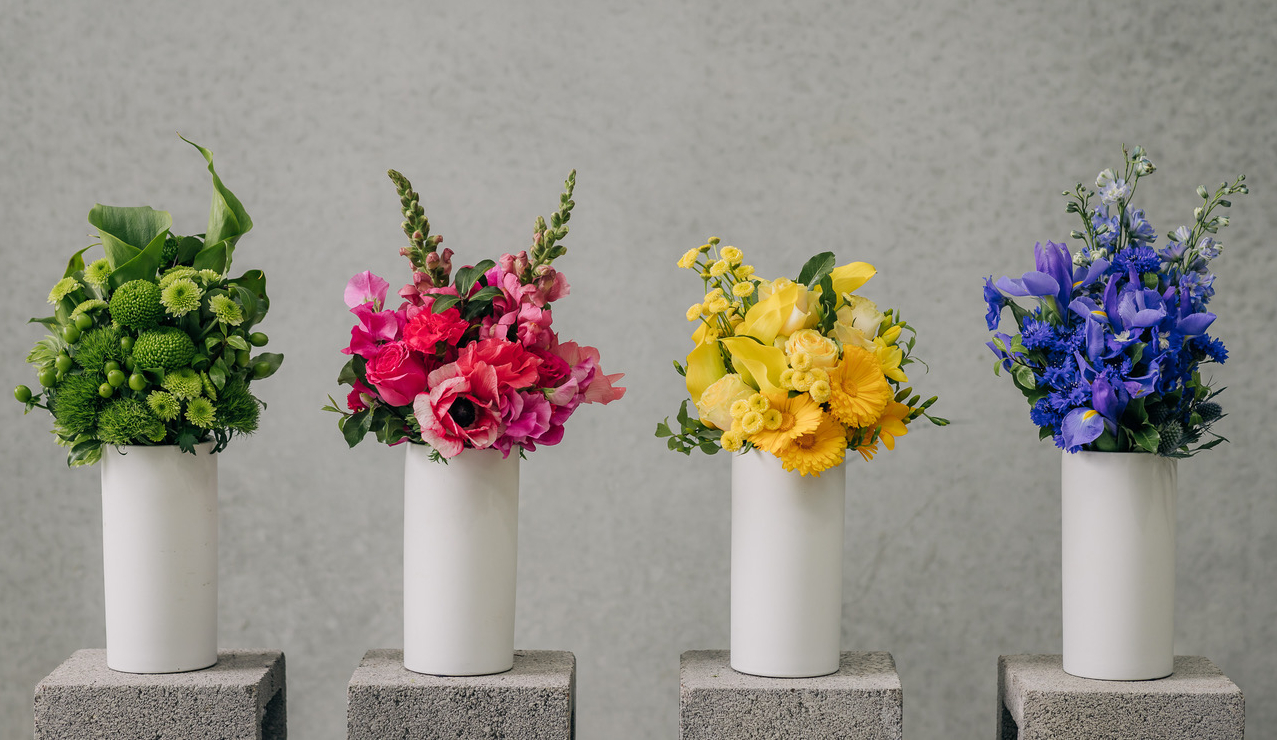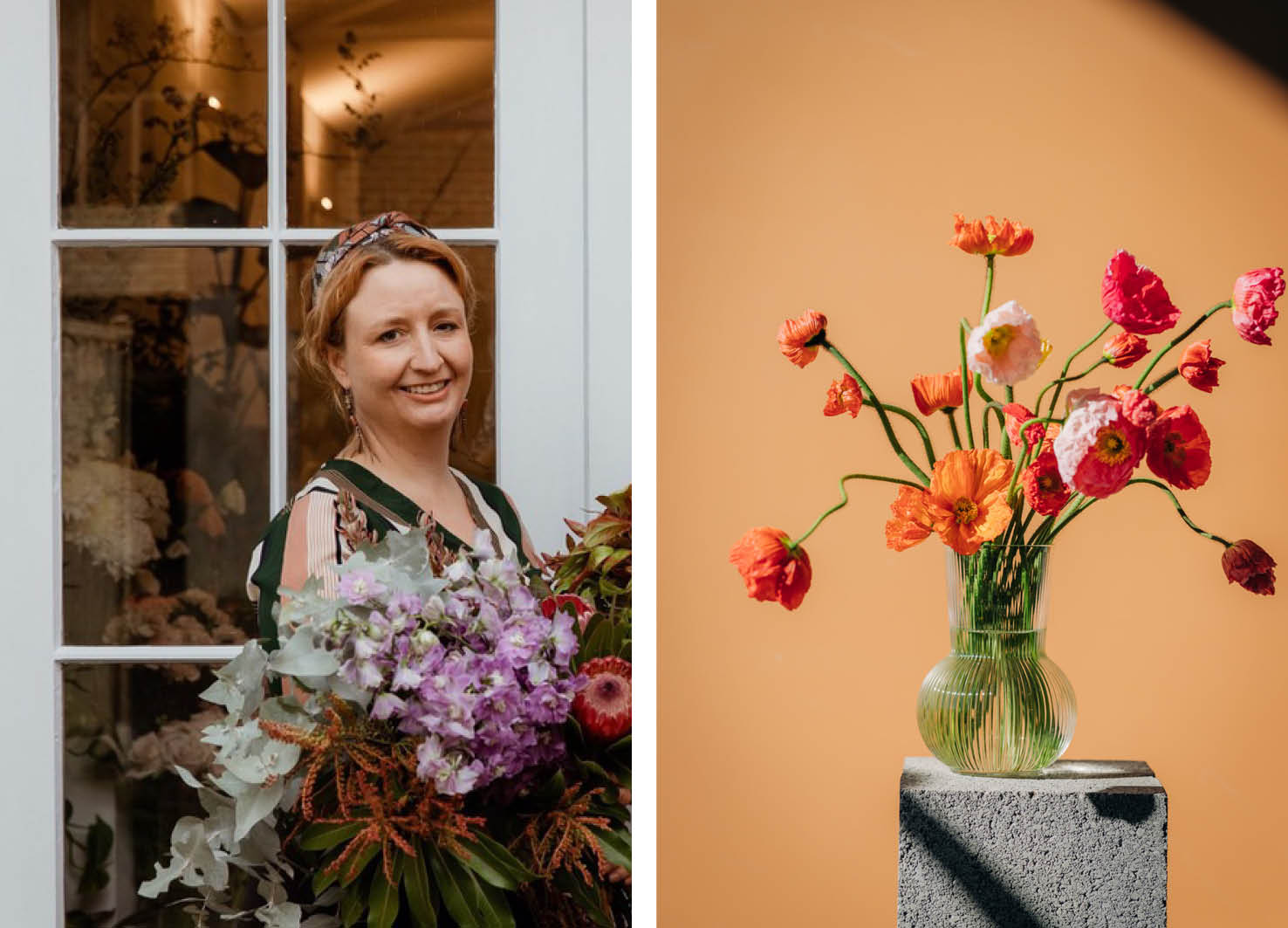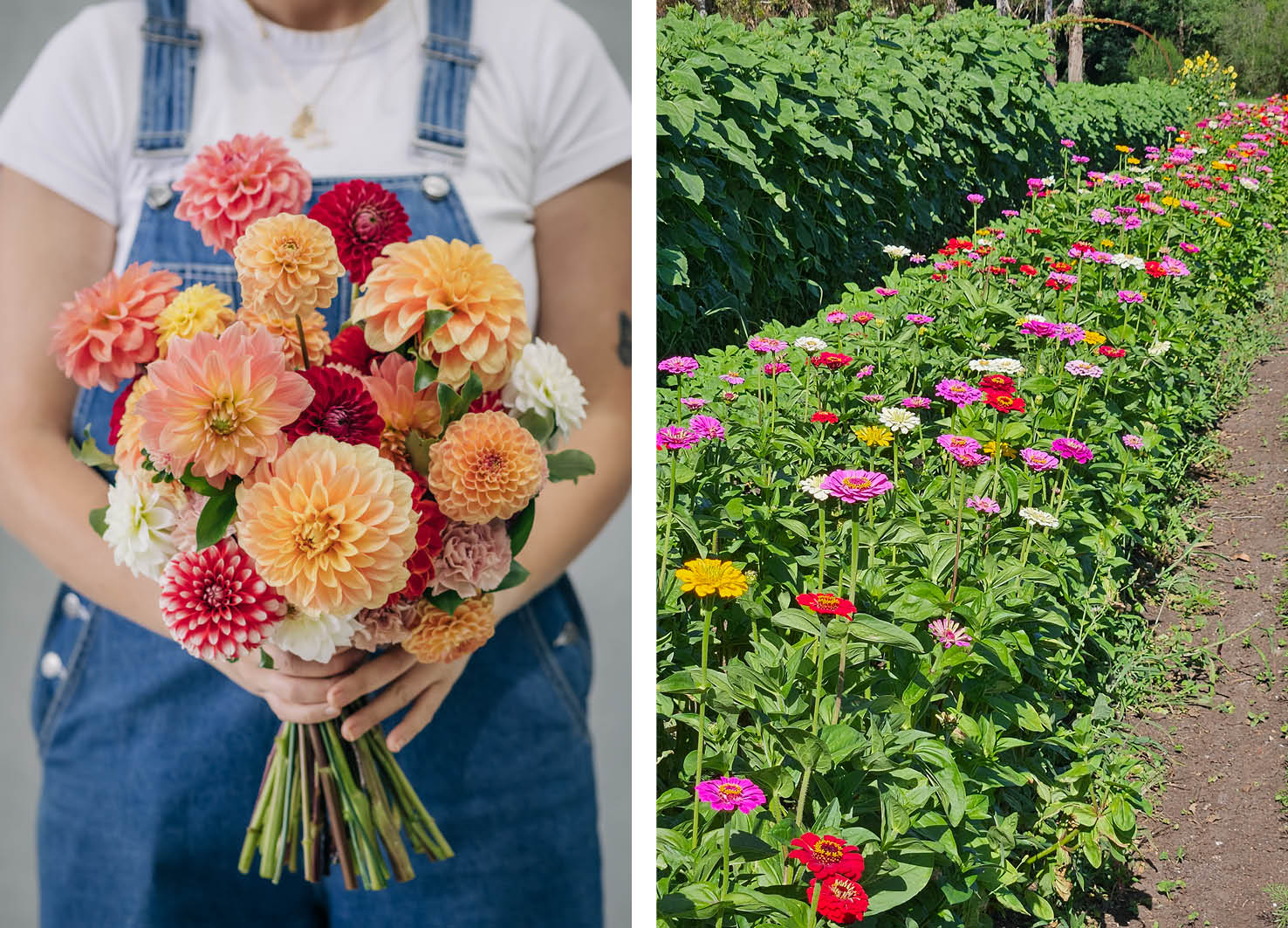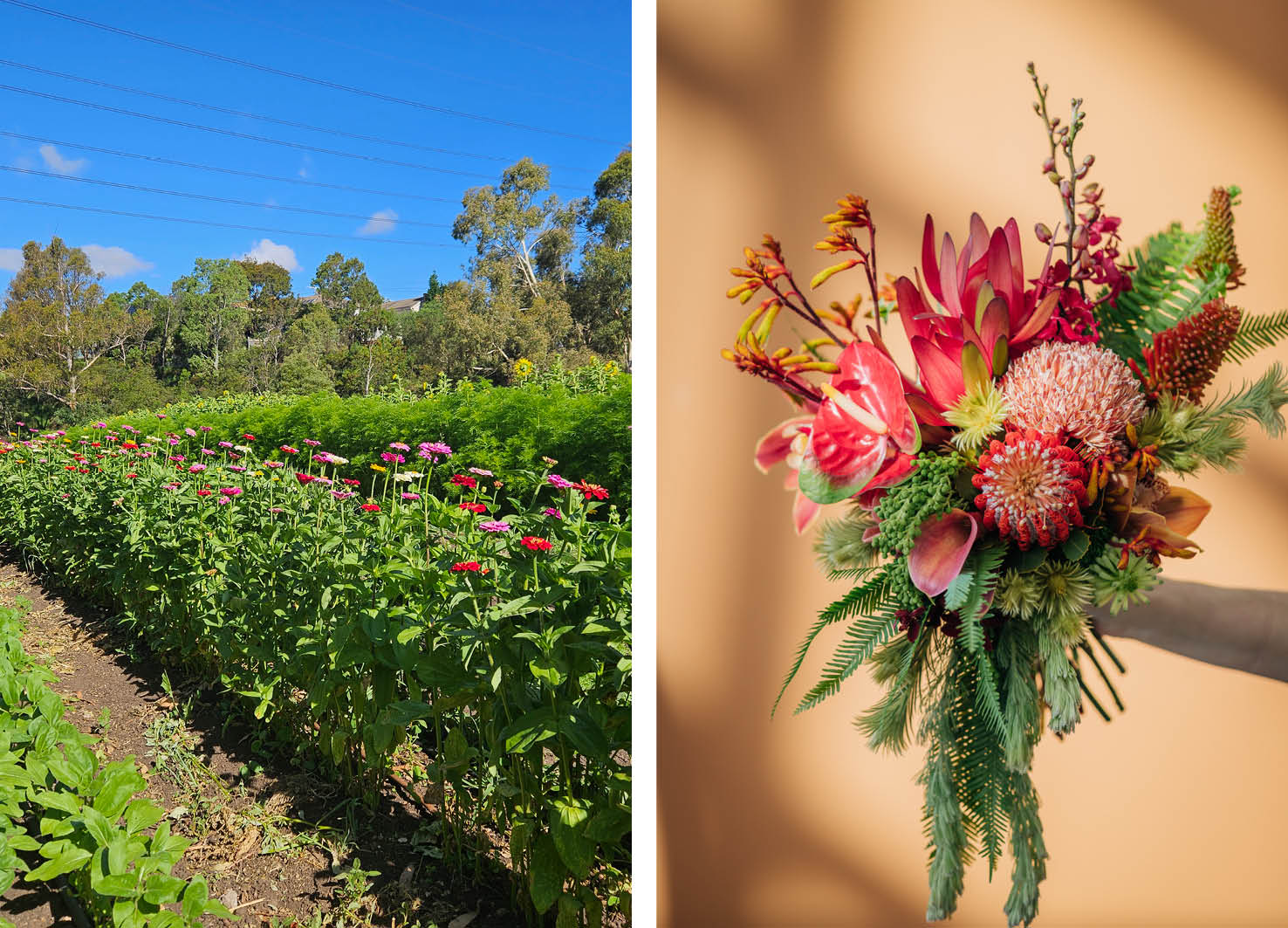
Create the Prettiest Summer Posy With Florist Alyssa Goodall
How to turn just-picked blooms into a just-so table arrangement? Forget the floral foam, says Alyssa Goodall, the clever soul behind the wild and whimsical bouquets of Collingwood’s Thrive Flowers. Instead, she uses chicken wire or vines, which do the job just fine – without poisoning the planet.
The green florist will appear at Melbourne’s Festival of Flowers, a three-month, workshop-filled celebration of all things pretty, pollinated and sustainable. Hosted by the good bunch at CERES, the Coburg event puts the spotlight on the not-so-rosy environmental impact of the flower industry (up to 90% of cut flowers in Australia are imports, flown in via refrigerated storage from countries as far away as Ecuador, Kenya and Columbia).
There’s tote-bag printing for kids, posy-making classes for grown-ups and, for those who aren’t afraid to get their hands dirty, there are organic blooms to be picked every Saturday morning on the banks of Merri Creek (30 bucks a bunch).
But what to do with those in-season sunflowers once they’re in your clutches? Alyssa shares her trade secrets below.

Your arrangements are so full of life. Any advice for us DIYers?
Choose an assortment of textures, shapes, sizes and colours – a combination of at least three or four flower varieties and assorted foliage will give your display contrast and make it more interesting. Also consider grouping your flowers together, which can create more impact than dispersing them evenly.
If you’re designing a front-facing arrangement, start with the taller stems and work your way to the short-stemmed varieties at the base of the vase. Choose a vase with a smaller opening and you won’t need as many flowers. And never use floral foam – instead, try chicken wire as a base for low, coloured vases and use vines for clear vases.
Which varieties should we be looking for in summer and autumn?
Keep an eye out for dahlias, cosmos, roses, hydrangeas, sunflowers, gerberas, carnations, paper daisies, kangaroo paw, banksia, chamomile, kale, marigolds and snapdragons.

Can you tell us a bit about the environmental impact of cut flowers?
Unfortunately, the floristry industry, unbeknown to most, isn’t as sustainable as we’d like it to be. There’s a very high volume of single-use plastics, including floral foam, plus green waste that’s not disposed of thoughtfully. And the increasing popularity of preserved flowers has introduced additional chemical usage and exposure to the industry.
Imports are another factor, as consumers want popular flowers to be available all year round. The travel involved is only one reason why we try to avoid them – there are also ethical elements at play, as well the potential exposure to additional chemicals due to overseas growing methods and because the flowers are required to be heavily sprayed when they reach Australian shores.
What can we do to make sure we’re buying sustainable blooms?
Ask your florist what’s in season and locally grown, or ask about the flowers’ country of origin. It’s important to support local businesses and farmers, and to steer clear of unnaturally preserved flowers. This way, you get to enjoy what our country can offer in the current season.



